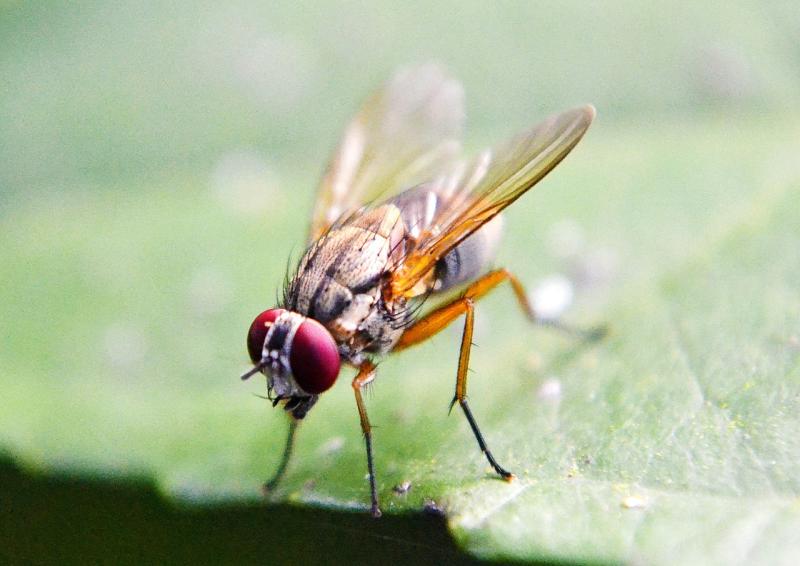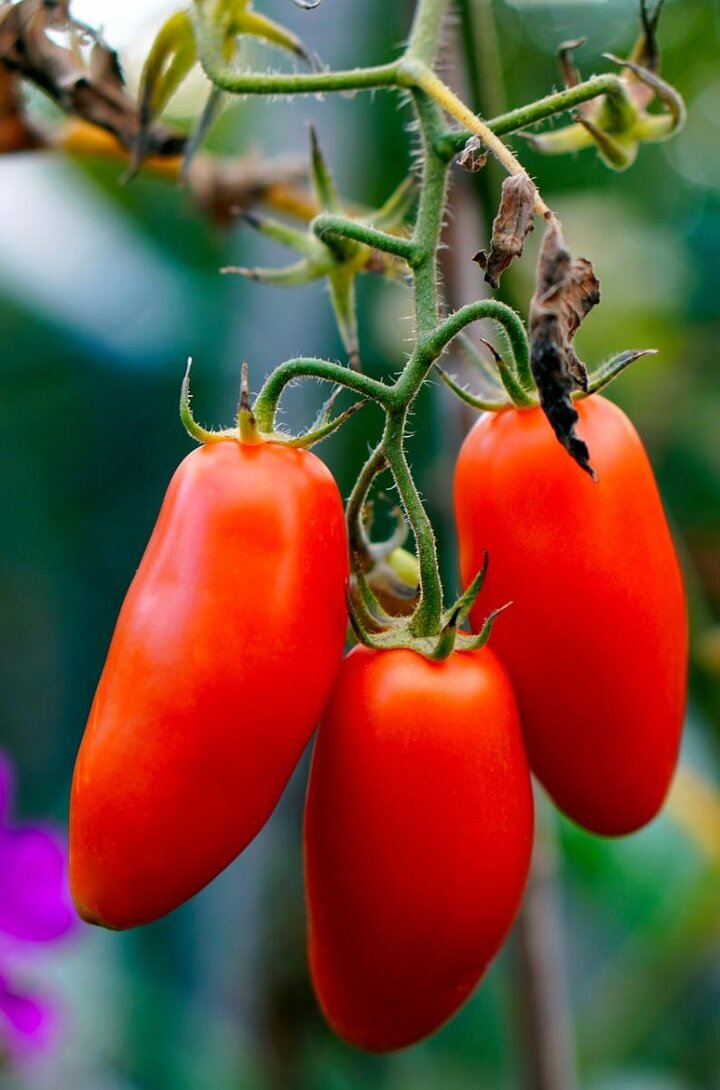Sarah Browning, Extension Educator

Adult fruit flies are 1/8th inch long, with brownish colored bodies and red eyes. Image from Pixabay.com.
When you see small flies or gnats in the kitchen, chances are high they’re fruit flies. These tiny pests can be a problem any time of year, but they are particularly common in late summer and fall.
Identification & Lifecycle

How can you tell the annoying little gnats in your house are fruit flies? Good question, since other insects like fungus gnats are similar in appearance and size, and a common pest of houseplants. But if you look closely - using a magnifying glass if necessary - fruit flies have red eyes. A really obvious red color, not just a little brownish red. So, if the insects bothering you indoors don’t have red eyes, they are probably not fruit flies.
Adult flies are about 1/8th inch long, with tan-colored bodies and clear wings.
Females lay eggs on overripe or damaged fruits. After hatching, the tiny, maggot-like larvae feed near the surface of the fermenting food. The entire lifecycle, from egg to adult, can be completed in as little as a week, so fruit fly populations can quickly increase to a very annoying level.

Where Do They Come From?
You may bring fruit flies in the house without realizing it. In winter, they can be found on overripe or damaged bananas, potatoes, onions and other produce at the grocery store and brought home with your weekly shopping.
In summer, fruit fly larvae hitchhike into the house on fruits and vegetable from the garden, often as eggs or larvae which can't be easily seen. Plus, adult fruit flies are small enough they can get through window screens or around gaps along the edges of exterior doors if they sense a food source indoors.
Fruit fly adults frequently feed in empty bottles or cans with small amounts of liquid - beer, wine or pop - in the bottom. Drains, garbage disposals, mops and cleaning rags are also potential sites.
Control
No insecticide is needed to eliminate fruit flies; the key is eliminating food sources and breeding sites. Follow these steps for control.
- Put all fresh fruits and vegetables in sealed containers or locking plastic bags if they must be left out on counters at room temperature. Better yet, place all fruits and vegetables in the refrigerator. Make sure to carefully check onions and potatoes - they are often overlooked, but a rotting potato is a great food source for fruit flies.
- Wipe down counters to remove any remaining sugar and do not allow unwashed dishes to stand in the sink.
- Rinse bottles and cans destined for recycling and every few days take the recycling outside instead of leaving it in the house.
- Empty trash cans at least weekly.
- Place compost materials in the freezer or an outdoors collection bin.
- Clean your kitchen’s garbage disposal to eliminate any bits of food it may contain.
- Sanitize mops, sponges, dish clothes, trash cans and recycling containers.
Fruit Fly Trap
Once the food sources are eliminated, it can take a couple weeks for all the remaining flies to die a natural death. To speed up the process, try making a fruit fly trap. This trap is simple to create, inexpensive and effective at attracting and killing the adult flies.
Choose a small container – a juice glass, baby food jar, pop bottle, yogurt cup or old jelly jar works well. Pour about an inch of apple cider vinegar in the container, add a drop of dish soap and swirl the mixture around. You can either create a paper funnel and stick it down in the top of the container, or cover the top of the container with plastic wrap and poke a few holes in it with a toothpick.
The adult flies are particularly attracted to the scent of apple cider vinegar and will find their way down the funnel or in through the plastic wrap’s holes. Once inside the jar, they will not find their way back out again. Eventually they will drown in the vinegar. Dish soap acts as a surfactant, reducing the water tension in the vinegar’s surface so the flies sink into the liquid when they land on it.
More information from Jody Green, Nebraska Extension Entomologist
Images
- Adult fruit fly feeding on a ripe banana. By Sanjay Acharya - Own work, CC BY-SA 4.0.
- In summer, fruit fly larvae hitchhike into the house on fruits and vegetable from the garden, often as eggs or larvae which can't be easily seen. Image from Pixabay.com.
Search Our Archive
Associated Video
Green and Growing Tip: Spotted Wing Drosophila
UNL Entomology Professor of Practice Tom Weissling talks about controlling this fruit fly. July 29, 2015.